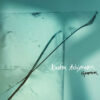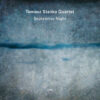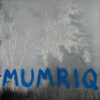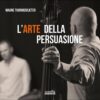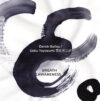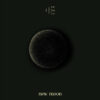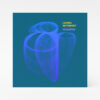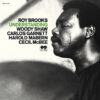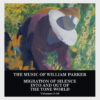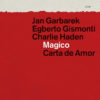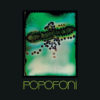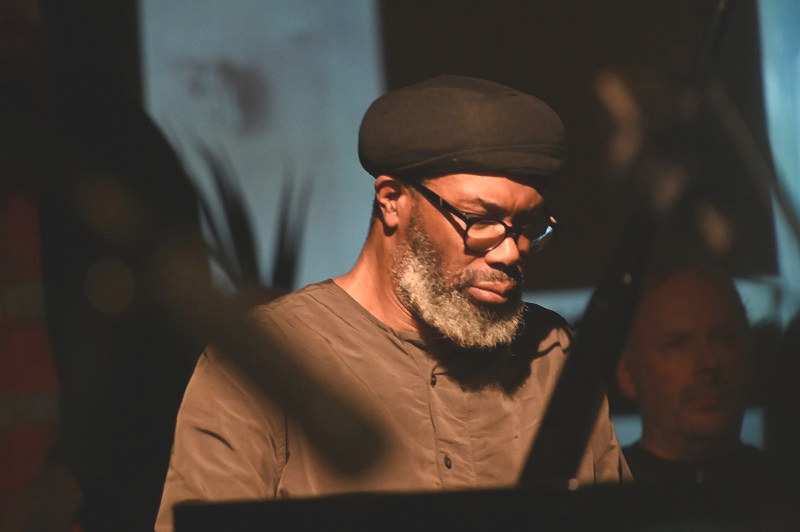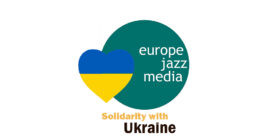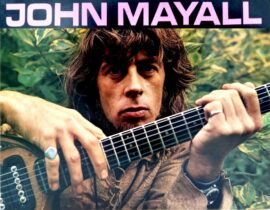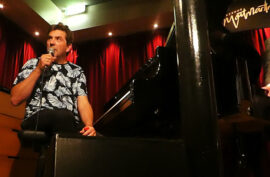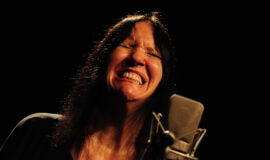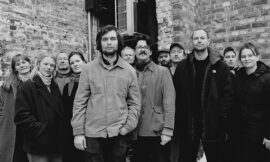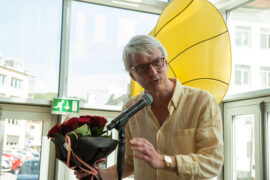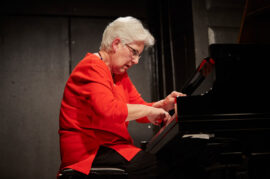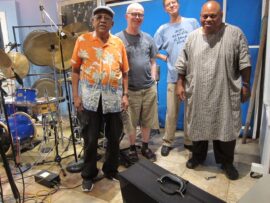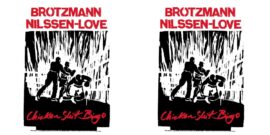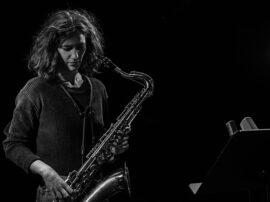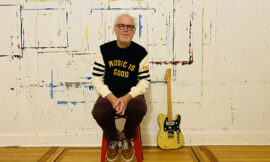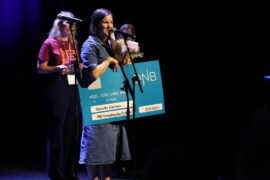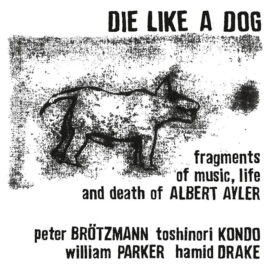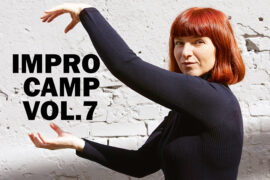CAFÉ OTO, LONDON, DAY 1 & 2, THURSDAY AND FRIDAY FEBRUARY 8-9, 2024: Insane! That is the only word I can think of to describe what I have been through. Still cannot really grasp it, fathom it, though! How many fathoms is it down there? How deep is this ocean? How deep is the answer?
Have you ever been inside a spinning dryer, or in a centrifugue, before? Me, neither! But that is exactly how I feel: Clean, warm, with the world spinning around my head – or is it the head spinning around the world? The art of the centrifugue – die Kunst der Zentrifuge. The flight has been to the stratosphere and beyond. And back again – while doing a million Axel jumps. That’s how it feels.
There and back again
This was the subtitle that J.R.R. “Beren” Tolkien gave to his children’s book, a spin-off of his great saga of the Middle-Earth – or Midgard – during the first three ages. The mythology of the distant past that the English never had. But needed.
I feel the same as Bilbo Baggins when he had been there and was back again – not quite able to fathom the deepness of what I have been part of. And possibly I’ll never be able to land again. The visit to Café OTO in London and its three-day musical event, was like nothing else. The energy density in the air around us, in the minds, ears, eyes and spirits of close to 200 individuals was tremendous. The fluxus of this energy – the power flowing through the room, around us, inside us – was driven by a reverence, love and dedication to Peter Brötzmann.
It was an energetic boost, a rocket launch, a burning spear. Stronger than any drug, any meth, ice, any adrenalin-punching stimulus. I can only compare the feeling to the experience as a kid of seeing and understanding, grooking, for the first times, what a Saturn V could actually do, and why they were so crucial for the launches into Moon orbits during the Apollo programme in 1967-72.
The occasional venue
Café OTO, from a Japanese word, written as I understand it with the kanji 音 (ɔ’tɔ), meaning noise or (loud) sound, turns 16 years later this year. Since its owners Hamish Dunbar and Keiko Yamamoto started the club in 2008, it has evolved into one of the major scenes in the world, on improvised noise and other free form music. It is located in what is said to have been a paint factory, in the Dalston area of the district of Hackney, in the north-eastern part of London. Traditionally denoted as East London. Originally it was intended by the co-creators to be a café with occasional concerts, today there are concerts here almost every night of the week. And what concerts!
We – a diverse and mottled band of some 150 people – home in on the café in early February, some on the Wednesday, others on Thursday, in a grey and rainy London. Winter in London, yeah! Not! Some of us come from just around the corner, others from Dublin, and yet others – like myself and a few others – come from Oslo, Norway. Others flew up here, from their winter residence in warmer climes. There are even some, flown in from Tokyo to experience the 音 of Café OTO during the next three days. Why?
The occasion
A man altered our lives, our music, our musical meaning of life. Peter Brötzmann died June 22, 2023 at the age of 82. In the salt peanuts* obituary on his death, I wrote that “… Brötzmann never became mainstream, but he turned into a great statesman, over an extensive, international domain of music. Here he was mentor, inspirator, guide and leader. That he was characterised as avant garde until the end of his life, was something he found weird. Some years ago, he expressed it this way: ‘I have hope for the very young people, that they can change the music. They still call me avant garde, but I’m 74! What kind of shit is that? That’s terrible. People who are 24 should be the avant garde!’ Just as Brötz himself was in 1965-66.” He was part of an avant garde that still reverberates, almost 60 years later.
Exactly one year ago, on the Friday 10, and Saturday 11, 2023, Master Brötzmann – who often had multi-concert residencies here – played his last concerts at Café OTO, with a quartet of the vibraphonist formidable Jason Adasiewicz, the versatile bassist John Edwards and the wonderful drummer with the clean-cut and wide-raging technique, Steve Noble. The latter three are back, Brötz is not.
The personnel set up
We all converge at Café OTO to experience three days of music dedicated to Peter Brötzmann. “When Peter Brötzmann played what would turn out to be his last ever concerts at Cafe OTO in February 2023, he played with such power it would have been hard for anyone present to believe he would never play publicly again, or that now exactly a year on we would be presenting this memorial to celebrate his life”, Café OTO writes in the notes prepared for the occasion.
For three days in February 2024, we are all here to celebrate Peter Brötzmann, his music, his life and his legacy. It is all organized around 20 musicians that have played with Peter Brötzmann, learned from him, being inspired by him, and developing the legacy he was a vital and key part of. Three of them have already been presented. Meet the rest of the gang,
Pianist Alexander Schlippenbach, now 85 years, was not there when Peter Brötzmann was born, in 1941. But together with Brötzmann, he was there in the Philhamonie in Berlin on November 3, 1966. Schlippenbach was commissioned for the 1966 Berliner Jazztage to organize new music. Schlippenbach put together Peter Brötzmann’s trio, Gunther Hampel’s quartet and Manfred Schoof’s quintet, and the result was called Globe Unity.
This monster orchestra of bands-within-bands was very far from any idea of a big band, it was more of an extension of Ornette Coleman’s double quartet and John Coltrane’s formidable Ascension orchestra. This monster has fathered – or is that mothered? – a total of fourteen albums. But even more: A new idea – a new meme, in Richard Dawkins original 1976 meaning – of how to organize larger orchestras, was created that day.
One of the members besides Brötzmann and Schlippenbach, was 81 years old Sven-Åke Johansson, of Swedish origin, but part of the German scene of improvised music since then. Another participant of the Globe Unity Orchestra from the early 1970s was Evan Parker, turning 80 in just a couple of months. But perhaps of greater relevance, the two were part of the mythical Machine Gun session of Peter Brötzmann in Lila Eule in Bremen, in February 1968. Another member of the Machine Gun session was Han Bennink, two months shy of 82.
The last octogenarian in the tableau is Joe McPhee at 84. McPhee was part of the Peter Brötzmann Chicago Tentet almost from the very start in 1997, following Brötzmann’s arrival in Chicago. With his saxophones, his pocket trumpet and his spoken words he is responsible for a multitude wonderful concert memories, with the Tentet and beyond. The Chicago Tentet was a breeding ground, not just for tremendous music the 15 years it lasted. As a distant descendant, or an n’th cousin, of the Globe Unity, its breeding ground has been taken over by other large ensembles developing the ideas, and growing new flowers in the fertile grounds left by the Tentet.
Ken Vandermark was an obvious member of the Tentet when it formed in 1997. Vandermark turns sixty this autumn, as does Mats Gustafsson. He also joined the tentet the same year, at a time when Vandermark had become a permanent guest in Gustafsson’s AALY Trio. Hamid Drake – 68 – was drummer in the first Tentet herd. Drake has played in innumerable bands in all sizes, with Peter Brötzmann. 51-year-old Fred Lonberg-Holm brought his cello to the first as well as the last editions of the Tentet. Paal Nilssen-Love – turning 50 late this year – joined the Tentet around 2002-03.
The last Tentet residency at Café OTO was November 9 and 10, 2012. Shortly after, Brötzmann broke up the band. Brötzmann said to The Wire that “… for the audience even the routine is a kind of show and they like that. But it comes to a point where the band starts to fulfil [these] expectations and I think I hate that”. It was time to stop.
In the Die Like a Dog quartet, Brötzmann played from the beginning in 1993 with Hamid Drake, as well as 72 years old bassist William Parker, a true visionary – just as Brötzmann. The trio ADA, with Lonberg-Holm, Nilssen-Love and Brötzmann, got its name at Café ADA in Wuppertal, and made a pair of CDs recorded in this room, called ADA/OTO – one with Steve Noble, the other with the 62-year-old Londoner piano magician Pat Thomas.
Peter Brötzmann’s son, Caspar Brötzmann, 61, recognized early on that he had to step away from his father musically. To this event, he brought his Sandberg California VM el-bass. His expression is described as industrial post-rock, but the distance to the improvised noise scene is short. Father and son did the record Last Home in 1990, and Caspar also participated in the first Brötzmann Tentet of 1993. Over the last years of Brötzmann’s career, he lived, and worked and toured extensively, with Heather Leigh (48). With Brötzmann, I heard her live for the first time, at the Kongsberg Jazz Festival in 2022.
And then three young ‘uns, all bitten by the bug – or Force – that Brötzmann helped to spread. Camille Emaille is an innovative and exciting French percussionist, just turned 30 years. Emaille could be heard playing with Peter Brötzmann at Café Oto in early September 2019. This was as part of a four days long Peter Brötzmann residential festival. Farida Amadou is 34, from Belgium, I heard her last at the Blow Out-festival in Oslo last summer. As part of the M.A.N. trio, with Steve Noble and Thurston Moore, and in other contexts she has driven a strong nail into the foundations of some exciting music.
Yoda said, “The Force is strong in this one”: Zoh Amba, originally from Tennessee, now residing in New York, was born in 2000. During 2022 she came with a new strong voice on her tenor sax. She grew up with the forests of the Appalachians around her, part of what probably was the mightiest mountain range in the history of the Earth, some 400 million years ago. A mountain range that included the oldest parts of the Atlas Mountains in Africa, southeastern Greenland, the highlands in Scotland and the Caledonian mountain range in Scandinavia, as well as parts of Svalbard. I heard her live the first time at Nasjonal jazzscene in Oslo a year ago.
The space is filling – Day 1 Thursday
As we enter the slightly rectangular room, its roughness strikes us. Remember the 1990s and early 2000s? When old derelict and stripped rooms, where the smell of bricks, and of mortar, was intimately linked to the appreciation of new music. I am reminded of all this, the first time I step into this room.
It cannot house audiences larger than around 150(?), if even that. Seats are barely available, almost all is standing audience. There is no stage, just a part of the room at the western wall. The audience is almost sitting on the musicians’ lap, creating an intimate, egalitarian, and chamberlike atmosphere. This is real chamber music – music for a chamber – where friends entertain each other. And as is usual when friends meet after a bit of an absence, there are hellos to be said, hugs to be given, greetings to be expressed, back patting to be done. As well as the updating on what has happened since the last time – all of this emphasising the intimate setting even more.
I have no idea how many times the twenty musicians converging on Café OTO during these three days have played here since the start in 2008. But I am pretty certain it sums at least to many hundreds, perhaps several thousand, person-concerts. The February 2024 Peter Brötzmann dedication festival, will add another 82 to this number, with a total of 24 performed concert sets.
The festival is to Peter Brötzmann, in gratitude and with love. Café OTO is jam-packed, and the smell and rustle of anticipation is thick in the air. Hamish Dunbar introduces the festival, runs through the sponsors who made this possible, and launches the first set: Pat Thomas in duo with Sven-Åke Johansson.
I have never heard these two, playing together. If they ever have. But it becomes clear, very early, that we are witnessing what will be one of the highlights of the festival. I can dream away in Pat Thomas’ piano playing forever and ever. Percussive and singing, modern and chock-full of history.
Johansson is the only one I know that have, perhaps even the only that could have, written a Concerto for tractors. He may be unable to use his feet on the drum set, but, frack!, what presence! His musical inventiveness is still there. Sharp, clear, attentive, replying to Thomas on the ride. Driving. Together they inflame the stories they are telling, becoming a real adventure before our eyes. Paff! Poff! Goff! Koff! Eeee! Toff! Eeyy! Loff! Laff! Yyyy! Laugh…ing! … and let loose …
The second set is by a quartet of musicians that know each other well, and have played together in a range of constellations before. And together they have played probably several thousand concerts with Peter Brötzmann. Evan Parker on tenor, John Edwards on bass, Alexander Schlippenbach on the piano, and Paal Nilssen-Love on drums. John Coltrane is sitting there, smiling, in Evan Parker’s horn, as a Seventh Father of the house, in a horn on the wall. Nilssen-Love with one stick, one brush, sailing away. Dancing fingers on Edward’s fingerboard – far, far away from a ‘chicken stranglehold’. Schlippenbach, I love his playing, … ‘nuff said!
Steve Noble opens the third set with a blanket of wash of the crash cymbal, with Ken Vandermark and Fred Lonberg-Holm in his footsteps. Zoh Amba’s high-pitched screeching is a crystal sphere over a calm sea. John Edwards punctuates and locks in with Noble. John pumping, Ken pushing, Fred pulling, Zoh flying, and Steve framing it brushingly in, enveloping it, eloping it.
Two bows, eight strings! – I can hear the smell of resinous rosin in the air. Noble picking up the mallets, the collective is dancing, this is trad jazz on speed. Body and Soul. Soul & Body. I want to dance, stepping into the temptation. The spirit indeed is willing, but the flesh is weak. My flesh is past its due date. Ken & Zoe! Ken & Barbie! Barbi & Zoh! Is Ken Ken or is Ken a kin? Dancing, singing, raining, reigning. The Force moves and exerts itself.
We are warm, and we want more. We are insatiable. Fourth set is with Pat Thomas, Hamid Drake and William Parker. In my ears this was the weaker set so far. In spite of Thomas’ Taylorian playing. If the set had ended half way, it would have been perfect, a jewel, a gem. But the latter half was not up to the same standard, spinning without perceived direction or traction.
This is the hunger games, there are no end in sight. Jason Adasiewicz enters the stage for the fifth set, with John Edwards, Steve Noble, Evan Parker and Joe McPhee. Or Two legends and a band, as I think of it. “No pressure, but this one is for the history books!” someone shouts over the din in the room, just before the set starts. Was it – for the history books? I don’t know, I am not writing them.
But what I do know that I know, is that I know that there was Nature Time in Café OTO. Joe, my Joe, my precious Joe. The time of nature, boys of nature, Nature Boy. Nature Girl. The beautiful baby in her mother’s arms. They play it so it’s true. … the broken hat is high – the broken high is hat – low hat/high hat/hi-hat/high to low/low to high/bottom to top/top to top/ toooo…. / … T…. T… T-t-t-t-t Trance.
It’s singing in the room. Joe & Evan, Jevan, Evajon, their voices are melting together, snaking together, braiding, as the 900 years old wood-carved worms, and dragons on the portal of Urnes stave church in Vestland county of Norway – or the 300 years older Oseberg ship carvings of interweaving animals. Have you ever witnessed anything more beautiful?
The sixth and last set is with Caspar Brötzmann, Jason Adasiewicz and Hamid Drake, together with Mats Gustafsson. Three punks and a gentleman. It was a paint factory, they say, but industry is back. But then suddenly the heaven clears up, repeated, downward third steps calm it down. Gustafsson changes from baryton sax to flute, while Brötzmann and Adasiewicz, interlock their grips. Drake putting the world in order.
We can sleep well now, in expectations of tomorrow.
Free forms on a free fry day – Day 2 Friday
We move slowly, and settle down in the now familiar room, as a congregation sitting down for mass. Peter Brötzmann is looking at us from one of the photographs on the wall – solemn-looking and sober. Is he trying to tell us something? Something about love, hate, the universe, and the meaning of life? One thing I am sure of, is this; he is here, in this room, now, with us. “You’re not doing the same old shit, are you?”
Today’s first set is, just as yesterday, a duo of legends, a duo that goes straight back to the origins of this music. Han Bennink – the man that has used his drum set in fashions and musical places few would venture – and Evan Parker.
In Norwegian we have the wonderful expression of ‘riding your particular hobby horse’ when your insistence on a favourite topic comes up every time and opportunity, often followed by gasps of exasperation from the audience. With Han Bennink in the drum stool, we always get more than the music. Often lectures, with some strong statements. And impressionistic stories from a long life on the road and on the stages. We get a lecture on free form jazz history. “Free jazz? Jazz was never free!”. There is no such thing as free jazz! But there are no sighs, no gasps – just attentiveness and ears being pricked up.
“My friend, … Misha Mengelberg, who is now in heaven,” says Han Bennink, invented the term instant composing. He continues; “but the term had already been used on a record by Jimmy Giuffre”. Somebody in the room shouts “Free Fall”, which is incorrect, as the term is not mentioned in Giuffre’s notes on that record. The world tree Yggdrasil, standing at the centre of Asgard and holding the nine worlds of Norse mythology together, however, is. Perhaps the squirrel Ratatosk is composing its stories instantaneously, as it runs with gossip between the snake Nidhogg at Yggdrasil’s roots and the eagle Vidofnir, at the helm of the tree?
The earliest mention of instant composing I can find, is in DownBeat’s Yearbook for 1961 (published January 1961), in a transcribed conversation of six musicians talking towards the end of 1960, about the future of jazz. Jimmy Giuffre is one of the participants, but it is Hall Overton who says; “Jazz to me combines the two functions — instantaneous composing and instantaneous performance”. The second mention is in Jim Hall’s liner notes for Giuffre’s Piece for clarinet and string orchestra/Mobiles, released in September 1961, “… the string parts are written, while the clarinet throughout [of Mobiles] indulges in a ‘go-for-yourself’, instant composition …” Obviously, these mentions come out of and reflect the ‘third stream’ approaches of Gunther Schuller, Jimmy Giuffre and others, initiated during the late 1950s. The use in 1960, and perhaps earlier, have an affinity to the ‘instant composing’ of Mengelberg, Bennink and Willem Breuker of the Instant Composers Pool from the mid-1960’s and onwards. But they are nevertheless different. The earlier use does not diminish the credit due to Misha Mengelberg, for his own (re-)invention.
Oh yeah, … and the music was great, too! Rap-rap! Rap! Rup! Run! Machine Gun!
For the second set, the two, Bennink and Evans, are supplemented by John Edwards and Alexander Schlippenbach. Its rhythmically arhythmical. It is full of life in its lifelessness. It is instant music; it is spontaneous music. It is music! Han Han/Han Hen/Hes Hos/Hyl Hyt/ and … Silencio.
When Han Bennink proceeds to present, with lyrics, Misha Mengelberg’s delightful and frolicking De Sprong, O Romantiek der Hazen [The Jump, oh the Courtship of the Hares] as an encore, we travel to heaven, the spaceways, and beyond.
Hamid Drake and William Parker are preparing to do the third set of the evening with Joe McPhee. Parker is engaging, and McPhee plays sooooo beautifully. There are hundreds of kilos of tons of history and love in every line, every strophe, every stanza. Tears of joy are very close.
The music is dedicated to the omniverse that was, and is, Peter Brötzmann. Joe tells us about the life in and with the Tentet through fifteen years. And of the ensemble’s last days. The Tentet played the last concerts at Café OTO on November 9 and 10, 2012. With the concert in Strasbourg two days later, the ensemble had made its last gigs. Soon after Brötzmann sent a letter about moth-balling the Chicago Tentet to the Wire: It was about “… the music. Hanging together for such a long time – with just a couple of small changes – automatically brings a lot of routine. In general [I have] nothing against [routines], you need it sometimes to survive, but if it gets so far that one can’t exist without the other – music is over”.
But the music is not over at Café OTO. The fourth set is with John Edwards on bass again, with Zoh Amba on tenor and Camille Emaille on percussion. It is mesmerizing, singing, joyful, scary. It is existential music. Zoh … Zol … Zal …. Zaal … Gaal … Giil … Giin … Gonk! Conk! Camille … Ca-mo-mille … Camo-mo-mo-mo-millle … Co-Co-Co-Coma million … Gonk! Gokn! Gohn! John! The sky is lifting – it is straight from the Book of John, chapter 15, verse 28. … Or thereabouts.
The next set, the fifth, is Edwards still on the bass, with Steve Noble and Joe McPhee. Just opposite of Café OTO is a pentecostal church, with the name Shiloh Church. From Hebrew Shiloh may be translated as ‘peaceful place’, even with ‘peacemaker’. Paradoxically, the name is more known from the Battle of Shiloh on April 6-7, 1862. The battle took its name from a log building, serving as a church, at Pittsburgh Landing by the Tennessee River, during the American civil war. The battle was decisive for the Union control of the Mississippi Valley. It was very far from a peaceful place during these two battle-days, there were nearly 25 000 casualties on the two sides. And we also know that the (Colt) Peacemaker was not used on the battle. This single action revolver was first designed about ten years later.
I wonder what the people on the other side of the Ashwin Street, think of the music flowing out of the locale on the sunny side. All the while, Steve Noble grabs the mallets, and we are in for a treat. Wasn’t there a comment or reply to Bennink in there. Ba-donk! Ba-donk! Splaasshhhh! Noble-Edwards interlocks. Brother Joe flies up, up, and away.
The roof rises miles above us – into a heaven that really is a shiloh place. Sacred! Sacrosanct! Supreme! Love Supreme! Café OTO becomes a church and Father Joe is in service! Love and reverence, worship and devotion. Love all around. All you need is love. Remembrance and veneration. It’s all in the air, in the music, in us, in all.
Hamid and the Ladies of the 音 creates the sixth set of the evening. Hamid Drake with Zoh Amba, Farida Amadou and Heather Leigh. Amadou and the mallet. Drake takes up, develops. Leigh expands, chick-a-chick-chiii-chiii. Founding bass, louding bass, rounding bass, sounding bass. Amba points to heaven, to nature, to the importance of finding meaning in life. The importance of laughing at life, the vitality of the meaninglessness of it all. Laugh! Laugh!
Troublemakers, noise makers, music makers! Far from fakers! Mats Gustafsson, Paal Nilssen-Love, William Parker, Pat Thomas, and Jason Adasiewicz. A small musical element, a figure of six eighth notes is a springboard. It is time for the last, seventh set of the second day of the Peter Brötzmann celebration and dedication. We let the next-door neighbours do the deification. Defecation and defection. Deduction! Defalcation! Every man his or her sickle.
That thingy noise, the noise of things, the things of noise. As Gustafsson on the barisax and Nilssen-Love on drums join hands, arms, music, minds, musical minds, as they interlock, the broad grin on PNL’s face is worth the trip and costs alone. My god, how much music the two has given us before, and now they are at it again. Parker picks up his Catalan gralla, an oboe-like double-reed instrument. MOG on the flute.
Singing and swinging birds are in the air. Swirls, borders, intertwined acanthi leaves, dancing. The end is nigh, the end is night. The end gives away for time for another day, time for a new morgon, new morning, new music. Prepare for a trip to Marathon, with Brötz on our mind!
If you want to read on, the third day of the Peter Brötzmann Dedication festival is described and interpreted here.
.
Text: Johan Hauknes
Main photo of Peter Brötzmann: Jan Granlie
Other photos: Lars Jönsson

Day 1: Alexander Schlippenbach and Evan Parker.

Day 1: Alexander Schlippenbach.
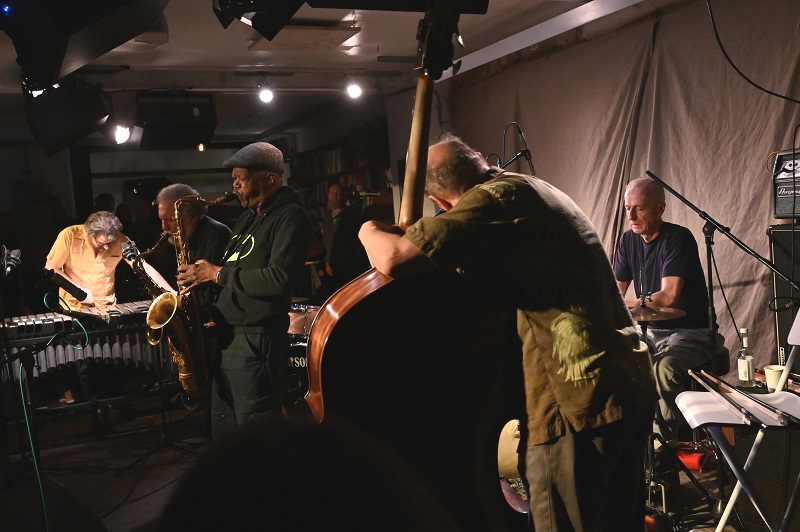
Day 1: Two legends and a band.
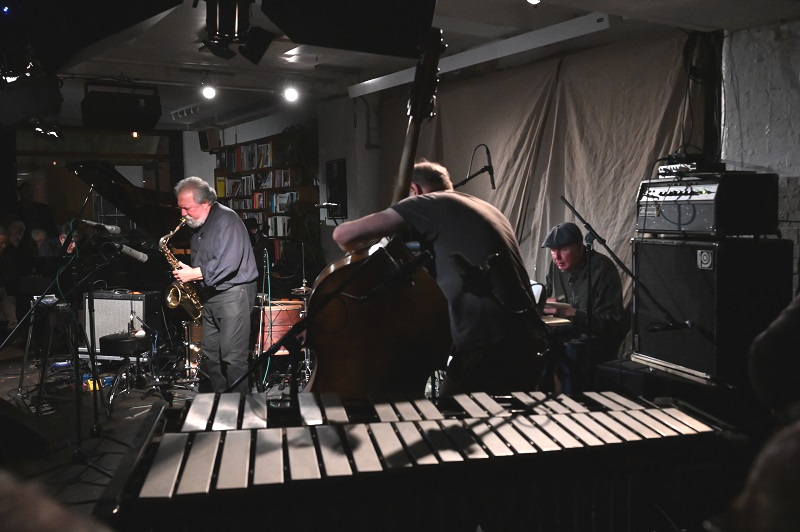
Day 2: Evan Parker, John Edwards, Han Bennink.

Day 2: Joe McPhee, William Parker, Hamid Drake.

Day 2: John Edwards, Zoe Amba, Camille Emaille.

Day 2: Joe McPhee, John Edwards, Steve Noble.

Day 2: Heather Leigh, Zoh Amba, Farida Amadou.
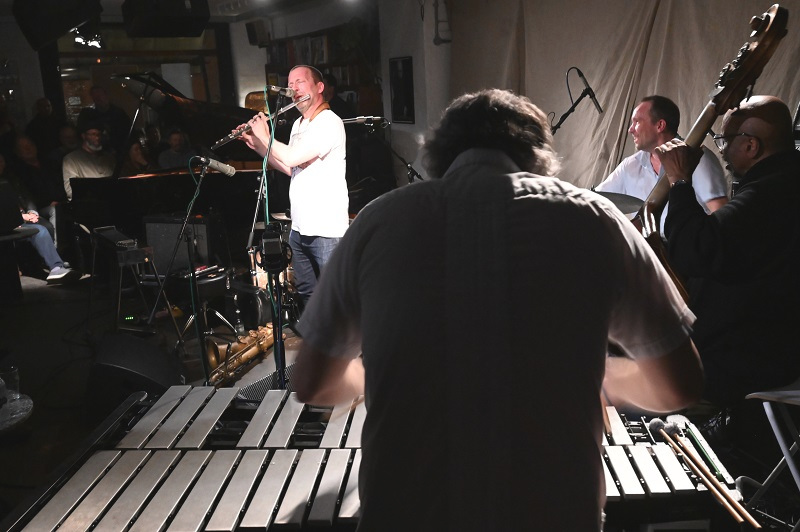
Day 2: Mats Gustafsson, Jason Adasiewicz, Paal Nilssen-Love, William Parker.

